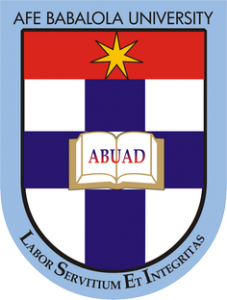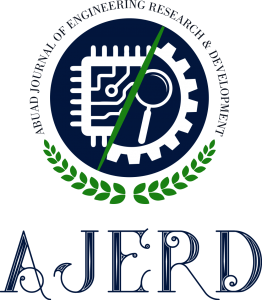PaperID: AJERD0402-01; Pages: 1-9
Author(s): Kufre Esenowo JACK, Jibril Abdullahi BALA, Nsikak John AFFIA, Emaediong Sylvanus UDOFA, Samuel ADENIYI
Abstract: The conceptual model for the remote assessment of visitor’s coronavirus infectious status is the focus of this paper. The sudden outbreak of the Coronavirus disease presented serious health challenges globally and the fastest means of detecting the affected persons lies largely on the handheld thermometer device. This instrument detects the temperature within certain range for the virus symptoms diagnosis. The handheld thermometer design is in a short gun format and requires human effort with utmost proximity, which may suggest transfer of the virus to the gun operators as its needs human input before it operates optimally. However, this model considers an intelligent and contactless way of detecting visitors’ virus status before allowing access to prevent cross-virus transmission to others. This intelligent device is embedded into the entrance area for remote and automated virus scan. The resultant effect will lead to the development of a visitor’s health status assessment scheme embedded into the remote entrance system; an android application for remote monitoring of the entrance and exit of the commuters; database and referrer options scheme via the regulatory agencies. The result for each visitor virus status is wirelessly transmitted and accessed through a mobile application and are documented on the cloud for the disease control agencies. This model is developed for areas such as banks, hospitals and homes. For research advancement, the design should be implemented with incorporated cameras for real time image processing of the visitors/commuters.
PaperID: AJERD0402-02; Pages: 10-17
Temperature and pH Effects on Biogas Yield from Co-Digestion of Food Waste and Cow-Dung
Author(s): Ochuko Mary OJO
Abstract: In this study, the effects of temperature and pH on biogas yield from co-digestion of food waste and cow-dung was assessed. 25 litres capacity mini-sized biodigesters were fabricated using locally available materials. The digestion process was evaluated over a 30-day retention period. The temperature and pH of the feedstocks within the digester were taken daily throughout the retention period of the experiment. During the retention period, the temperature ranged between 25.1 oC and 28.4 oC for cow dung single substrate digestion, 25.0 oC and 27.7 oC for food waste single substrate digestion, 25.2 oC and 27.8 oC for the co-digestion of cow dung and food waste. The pH varied ranged between 6.7 and 7.5 between day 1 and 10 for the single- substrate digestion of the cow dung, a decline in the pH was observed after day 10 to a lowest value of 5.4. During the single substrate digestion of food waste, the pH staggered between 3.4 and 4.6 between day 1 and 9, and a steady decline in the pH after day 10 was observed to a lowest value of 2.7. For the co-digestion of the cow dung and food waste, the pH staggered between 3.8 and 5.4 between day 1 and 18, while there was a decline in the pH after day 19 with the lowest value of 3.8 observed. Even though the digestion process took place within the mesophilic temperature range, the percentage methane in the biogas produced was very low. This may be due to the fact that the digestion process did not occur within the recommended pH range. Since most anaerobic bacteria including methane forming bacteria function optimally at a pH of 6.8 to 7.6, the rate of methane production may decrease if the pH is lower than 6.3 or higher than 7.8.
PaperID: AJERD0402-03; Pages: 18-27
Author(s): Eugenia Obiageli OBIDIEGWU1, Henry Ekene MGBEMERE, Ayomikun Zainab OTEJU
Abstract: Friction brakes in trains are very important aspect of railway transportation as they function based on friction between the braking elements and the wheels to perform speed control actions. Cast iron has been the conventional material for producing train brake blocks. The drawback with cast iron brake blocks is the noise generated during rolling of the wheels on the track as well as wear on the wheel tread surface. The wearing of wheel tread puts the safety of the passengers and goods being transported at risk. Thus, this work investigates the mechanical properties of train brake blocks produced from polypropylene (PP) blended with calcium carbide residue. The composite samples were produced using recycled (PP) as matrix, calcium carbide particulates at 150 and 300µm particle size as reinforcement and graphite varying the particles from 0 wt.% – 16 wt. %, step 4. The samples were subjected to mechanical tests conducted according to ASTM D3039(Tensile), ASTM D256 (Izod impact), ASTM E92-16 (Vickers hardness) and ASTM D3702-94 (Wear rate) standards. Results showed that the hardness value was found to increase from 77.7 to 88.1 Hv increase in calcium carbide level from 0 – 4 wt.%, but slightly reduced after 4wt. % of the reinforcement for both particle sizes. The same trend was observed for wear resistance and tensile test. This indicates that there was proper distribution and better bonding of the particles at 4 wt.% of reinforcement than at higher percentage compositions. Therefore, train brake block with required mechanical properties can be produced from polypropylene matrix composite reinforced with 4 wt.% of Calcium carbide residue.
PaperID: AJERD0402-04; Pages: 28-35
Effect of Silica Nanoparticles on Wettability of Oil-Wet Surfaces
Author(s): Tinuola UDOH, Simon HODGSON, Alice GILLETT
Abstract: The effect of silica nanoparticles and brine salinity variation on the wettability alteration of oil-wet surfaces was investigated in this paper. The rock and fluids of Kolo oilfield in Nigeria were used as case study and five brine salinities and two nanoparticles’ concentrations were investigated. The contact angle and Amott wettability index methods were used to investigate the wettability alteration potential of silica nanoparticles on oil-wet surfaces and intact core plugs, respectively. The results of the contact angle tests showed that the use of 1 g/L and 5 g/L silica nanoparticles reduced the oil-wet surface’s angle from 79o to 73o and 71o respectively in aqueous solution. Lower contact angles were however observed with the use of brines of different salinities with the lowest angles (69o and 68o) being obtained with lowest salinity brine (90D). Which shows that the nanoparticles have the tendency to modify oil-wet surfaces towards water-wet condition irrespective of the brine salinities. Also, wettability alteration towards increasing water-wetness was observed with decrease in brine salinities and increase in the concentrations of the nanoparticles. Finally, the results of the Amott wettability index to water show that the application of nanoparticles modifies the intact rock wettability towards water-wet condition and higher oil production was observed with the spontaneous imbibition of nanofluid with 0.25 wettability index relative to that of the formation brine that was 0.1. The sediments of nanoparticles were however observed on top the rock core and at the base of the cell during the spontaneous imbibition process. This work presents experimental study on the wettability alteration potential of the application of silica nanoparticles in Kolo oilfield reservoir rock and fluids. The study presented in this paper is relevant to the design and implementation of nanoparticles enhanced oil recovery process.
PaperID: AJERD0402-05; Pages: 36-42
A Voice-Activated Small Office Automation and Security System using Raspberry Pi
Author(s): Comfort Oluwaseyi FOLORUNSO, Wasiu Adewale RAHEEM, Adebayo OKUTUBO, Oreoluwa AYININUOLA
Abstract: Humanity has benefited greatly from the emergence of automation systems. It has made life easier for the elderly, crippled, and infirm. The existing automation system has been enhanced to provide a secure system for use. This paper aims to provide a voice-activated small office automation and security system for office workers with a safe and stress-free atmosphere. This system includes both hardware and software. The hardware components are made up of some sensors and Raspberry Pi which serves as the central control, while biometric access was employed to give access to the credible user via the fingerprint scanner. The software is an intangible component which govern the system’s connected devices and sensors. The developed system gives a satisfactory recognition accuracy of 89%. This paper offers a working prototype of a real-world office automation and security system that can be customised to match a variety of settings. This work was designed to fit into a small office, house or the likes.
PaperID: AJERD0402-06; Pages: 43-55
UNILAG Laughter Corpus – A Dataset for Laughter Analyses and Biometrics
Author(s): Olumuyiwa Sunday ASAOLU, Comfort Oluwaseyi FOLORUNSO, Oluwatoyin Pius POPOOLA, Michael Oluwadamilola OYEYEMI, Linda ORANYA, Florian CUMMINGS
Abstract: Laughter is the verbal release of air from the lungs accompanied by distinctive facial and physical gestures that show joy, pleasure, ridicule, or uneasiness. Laughter corpus exists in literature; however, these were not suitable for biometric purposes. This paper presents a laughter dataset for biometrics and laughter analyses. This dataset consists of audio recordings of 123 participants who were viewing humorous video clips. Altogether, 1763 bouts of spontaneous laughter were recorded, aside acted laughter and speech utterances. Acoustic analyses were conducted using conventional features and by modifying standard algorithms. Results obtained from different experimentations are consistent with literature. It is expected that this dataset will spur additional study in the subject, and that it will then be expanded in a gradual way across many application areas over time.
PaperID: AJERD0402-07; Pages: 56-69
Author(s):Ezenwanyi Fidelia OCHULOR, Oluropo Samson ADEOSUN Ayotomide Peter AKIN-OJO
Abstract: The need for biocompatible, bioactive and biodegradable materials which can be utilized as viable biomaterials in Tissue engineering cannot be overemphasized. Cytotoxicity, immunogenicity, non-biocompatibility, non-biodegradability are some service challenges encountered by the use of some biomaterials, however the abundance, bioactivity, non-toxicity and its structural resemblance of native tissue ECM (extracellular matrix) has strategically placed gelatin and gelatin based biocomposites as viable biomaterials for biomedical applications. Gelatin is prepared by thermal denaturation of collagen, from skin and bones of animals generally cows and pigs. In this study gelatin was extracted from bovine bones of original size after cleaning and reduced size of between 0.1-10mm. The size reduction was done to investigate its effects and variation in basic concentration on the properties of the extracts. Varying molarities of 1, 3 and 5 mol/dm3 of sodium hydroxide (NaOH) solution were adopted in the pre-treatment process prior to water bath extraction, these treatments were also carried out on unreduced bone samples. Physico-chemical characterisation showed that the Type B gelatin extracts had viscosity values ranging from 3.5 – 4.3 cP, moisture content ranging from 7 – 8%, pH ranging from 4.2 – 5.8 and high protein content ranging from 61 – 64%. The reduction in size of the samples had no significant effect on the yield. Functional group assessment by FTIR confirmed the production of gelatin in all the extracts although with the presence of some inorganic minerals which were present in the raw bone. These properties confirm viability of the extracted gelatin for the production of gelatin-based composites for bone implants in Tissue engineering. Also, the use of cow bone has a positive impact on environmental waste management as the bone waste was converted into a useful product.

